QOTW: What Makes Your Favorite Strategy Games Great?
Battle Realms designer Ed Del Castillo and GameSpot editors talk about what makes their favorite strategy games so great.
In celebration of the significant developments in the strategy genre, this week we're asking, "What makes your favorite strategy games great?" Joining us is special guest Ed Del Castillo, a pioneer among pioneers in the strategy genre. For your reading enjoyment, we're also posting your letters to last week's question, "What's your most memorable single-player experience?"
Do you have a favorite strategy game? What makes your favorite strategy game so great? If one of our editors' reasons is important to you, vote in our Instant Poll. Also be sure to tell us about your favorite strategy games and why they're so great by
President, Liquid Entertainment
Five things: strategy, gameplay, graphics, interface, and entertainment.
First, regarding strategy, I know that this may seem kind of odd, considering that the genre is real-time strategy, but that is exactly why this is so important. Until now, most of the RTS games out there have focused on creating strategy on the production side. Not having certain strategic elements--such as the effects of terrain and real line of sight--reduces the number of strategic options available to the player on the combat side of the equation. In the absence of that complexity, players focus on production, where the game's intricacies lie. Real-time strategy games become more fun as more strategic elements are incorporated into the actual combat, creating a complete strategic experience.
As for gameplay, this is a really broad heading for single-player, multiplayer, enemy AI, same-side AI, and game balance. The single-player experience must, of course, be good. The majority of RTS players still play the single-player campaigns. Not only does single-player serve as the training ground for the game, but it is also the place where the author's vision for the game universe is most clearly expressed. In the campaigns, the gamemaker can create stories and events that aren't possible in multiplayer. Multiplayer is the testing ground: Nowhere are game balance and AI more rigorously put through their paces. If there is a flaw in either, it will be found and exploited here. If the game holds up in multiplayer, you can bet that it will have a long shelf life.
In terms of enemy AI, particularly in the single-player version of the game, it must challenge players while facilitating the story. This isn't easy, since many times these two things are in opposition. On the other hand, same-side AI is an unsung hero. This is the AI that deals with how your units respond to threats, resolve pathfinding conflicts, fight, and otherwise handle themselves, whether you've given them orders or not. I call it the unsung hero because if it's good, players never even notice it's there, but if it's bad, it creates a barrier to the enjoyment of the game as players fight to get their troops to do what they want them to do.
Game balance is all-important--without game balance, there is nothing. Game balance makes or breaks games. A game with poor game balance will be easily exploited in single-player and become completely uninteresting in multiplayer. On the other hand, good balance facilitates joyous "moments" in the gameplay and depth of strategy.
Third, an interface is like a ninja--if it's well designed, players will hardly know it's there. If it isn't, then players will be relegated to lives of hell as they fight with the bloody thing. A good interface subtly guides players while allowing them to feel in control. It empowers players. It should be as clean and clear as possible--with buttons where you would expect them to be.
Fourth, it's graphics. RTS players have traditionally been forgiving of graphics, especially if they came at the cost of gameplay. That is changing. Graphics are an expression of the author's vision for the world. They draw people into the game and serve the secondary purpose of masking minor gameplay hiccups. They are an added feature, which allows a good game to feel even better. In the future, gamers will expect better graphics from the RTS, but that doesn't mean that companies should skimp now.
Last but not least, there's entertainment, which is defined as something that amuses, pleases, or diverts, especially a performance or show. A real-time strategy game, or any game for that matter, is a good game if it entertains you. Did a certain soldier's animations make you laugh? Did you talk to your friends about the game for an hour after you finished it? Did you curse at the enemy when it got the better of you? If you answered yes to any of these, then you probably enjoyed your experience and probably have a winner. Don't worry if others don't like it; entertainment is a personal thing, and you shouldn't let others decide what's good for you.
Next: Giancarlo talks about creative unit design
Assistant Editor
When the first generation of real-time strategy games, such as Dune II and Warcraft, hit the market, I really didn't pay much attention to them because my computer at the time was nearly incapable of running such games. Even after upgrades, I still didn't have much interest--that is, until I saw a few friends play Warcraft II. I can't pinpoint what drew me specifically to Warcraft II since it was really a combination of elements that made the game so interesting. Though the gameplay wasn't much different from previous real-time strategy efforts, it was the first time I had a chance to see experienced players put a real-time strategy game through its paces, so witnessing all the different strategies they used for gathering resources and building units probably interested me most. But certainly, the great unit designs, the excellent campaign mode, and the relatively high production values all contributed to my interest as well. Warcraft II helped me realize how great the real-time strategy genre could be, and I became a fan almost instantly.
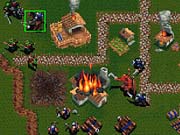
After Warcraft II, I moved onto other real-time strategy games, namely Westwood Studios' Command & Conquer. As with Warcraft II, I saw a few friends playing it, so I gave it a try, and, needless to say, I wasn't disappointed. Command & Conquer brought a different visual style to the genre; it placed a greater emphasis on a sense of realism rather than going for the cartoonlike look in the Warcraft series. The biggest indication of this was its infantry units, which were depicted as a few miniscule pixels on the screen rather than massive disproportionate sprites. The realistic visual approach lent itself well to the gameplay as well because you were at least slightly familiar with the destructive power of some units--you knew that infantry couldn't do much damage to a massive tank unit and, conversely, a tank could simply run over an enemy's infantry. Also, the introduction of power facilities added to gameplay by emphasizing strategic attacks rather than just sending all your units in at once.
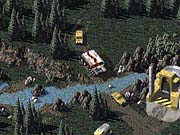
Perhaps the most popular aspect of both games was the multiplayer mode. Both Warcraft II and Command & Conquer had great multiplayer modes. Warcraft II tended to get a little more of my time because of its popularity on the Kali gaming service, but I jumped at a multiplayer game of Command & Conquer whenever I had the chance. Unfortunately, as is the case today, if you weren't familiar with some of the trick strategies involved in both games, a multiplayer match wouldn't last very long. I remember the first time another player sent an ogre rush at me during a game of Warcraft II: My base was nearly destroyed within a span of about two minutes.
Looking at more recent real-time strategy games, I am drawn to them because of the same things. Creative unit design is probably the most important feature because it can directly affect the way a game plays. For example, in the upcoming game Emperor: Battle for Dune, one unit is capable of summoning and riding giant sand worms, so chances are that I'm going to set up a strategy in which I can effectively use those units, because they do so much damage. With almost the entire genre of real-time strategy games moving into three-dimensional worlds, it'll be interesting to see if some aspects of design--especially map design--begin to take precedence over others.
Next: Craig says it's all in the details
Downloads and Media Editor
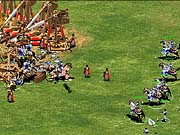
There are two strategy games that exemplify what I like to see in strategy games. They both can take a long time to play, which is fine with me because if I were in the mood to play a fast-paced game, I'd play Quake instead. I like to be able to spend time attacking, defending, and then counterattacking. And the game needs to have a fun single-player experience.
The first game is Ensemble Studios' Age of Empires II: The Age of Kings. What makes this game so great is that players have a lot of options. There are 13 civilizations that players can choose from, each with special abilities and a unique unit. Every unit is strong against one type and weak against another. For example, a knight, who is adept at taking out archers and siege weapons, is vulnerable to pikemen. This keeps the game from boiling down to the typical "tank rush" strategy found in many strategy games, where a player just amasses a huge number of the same type of unit and runs them into an enemy base. Players need a broad army to keep counterunits from ruining the day. I used just about every unit in Age of Empires II at one time or another. I think the only one I never used was the cavalry archer.
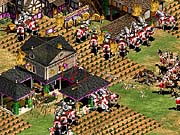
Multiplayer and skirmish games are fun because of the varied types of games. Besides engaging in the usual team games and free-for-alls, players can play regicide, in which they seek to assassinate the opposing player's king. In addition, no matter what mode you choose, the maps are randomly generated. This can hinder some strategies because if a player can't find a steady food supply in the beginning, a new strategy may have to be found. I also like the resource model because having four separate resources makes players think more strategically about variables: Should I place all my workers on stone and sell the stone for gold or distribute the workers more evenly?
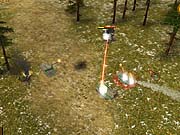
Earth 2150: Escape from the Blue Planet is the other strategy game that I have enjoyed playing. In fact, it's one of the few strategy games in which I enjoyed the single-player mode so much that I never tried the game online. In particular, I like that there is a main base to stage your operations; I never understood why most strategy games would have you do the same thing over and over again: build new units and harvest minerals with no clear sense of what it's for. In Earth 2150, when you finish a mission, you can take surviving units and money with you back to the main base to be used in another mission. Sometimes you don't even need to build unit-producing structures in the mission area because you can transport them from the main base. I also like how the units work. Players don't have a rigid unit list; you need to "construct" them and put them on a building list. After you have researched the appropriate items, you first choose a chassis, like a tank or helicopter, and then you can mount the weapons of choice on them. This gets really interesting when you get a chassis that can have multiple weapons attached. You can have a Jaguar with a grenade launcher and plasma cannon or instead choose to put on a rocket launcher with a plasma cannon subweapon and another plasma cannon on the other weapon mount.
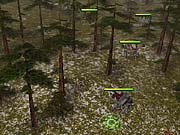
I also love the game's attention to detail. A 24-hour clock means that there is a day-and-night cycle, which is yet another thing that I don't understand about most other strategy games. In addition, units can hit their own buildings if they are too close when firing at an enemy, and rockets continue to fly in a straight line if they miss their target. The buildings' shadows slowly rotate as the day progresses into night. When buildings and units are destroyed, their charred remains can impede weapons' line of sight, so some units may need to move around them to continue firing at something else. It's these minor things that make this game so great and leave me wondering why developers do not implement them in other games.
Next: Trey on gameplay that requires skill, not reflexes
News Editor
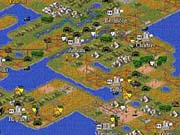
My all-time favorite strategy game is easy to pick--Civilization II--but it's harder to nail down exactly what makes it so great, because it has so many good features. First of all, the game provides a fun opportunity to rule a nation from primitive times all the way through to the space age. The appeal of this kind of power is almost universal; even individuals who aren't power-hungry often feel like they could do a better job at leading the country if they had the chance. The game is also a great way to learn about history and the rise and fall of different civilizations. While Civilization II isn't an accurate representation of human history, it is realistic enough that you feel like you're learning something when you're playing it, and that can't be said about most games.
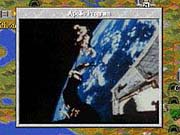
But subject matter and educational value alone aren't what make Civilization II great. It takes an element of fun to make games playable, and Civilization II's addictive turn-based gameplay is what has kept me interested in the game ever since I first played it. The fact that the game is turn-based is important. It lets players play the game at their own pace, and like any true strategy game, it taps players' mental skills more than their reflexes. The game also takes advantage of the "just one more turn" effect, in which players set up complex strategies in their heads as they play and will continue playing for hours on end for fear that if they stop, they will forget a critical element of their strategy.
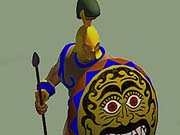
Civilization II is great not only because of all these elements, but also because it is easy to learn the basics. However, the sheer number of different units, technologies, and cultures make the game almost impossible to completely master. As soon as you have led one civilization through the process of cultural and scientific evolution, you want to try another civilization, which will require a different route for reaching the same goal.
I'm looking forward to seeing if Firaxis can improve upon the formula with Civilization III. It seems almost impossible to make a better game beyond improving some minor elements, but we'll have to wait and see if the game can live up to its name.
Next: Greg talks about a great premise and interesting characters
Executive Editor
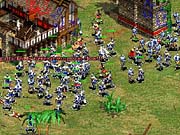
My favorite strategy games of all time include Heroes of Might and Magic II. The runners-up to my runners-up list are... No, I'll stop, but I could easily go on. The fact is--there are a lot of really great strategy games, and a lot of them are very different from one another. However, I do think they all have particular design elements in common. Some of the things that make all these games great aren't rocket science, either.
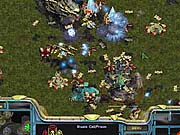
The abundance of strategy games--real-time strategy games in particular--exemplifies both the popularity of the genre and also the various problems that are commonly associated with it. If you've read reviews of a lot of strategy games, then you'll know that the same old criticisms come up time after time. That's not because game reviewers are running out of things to say about the genre. Instead, strategy game designs typically run into the same types of pitfalls. For instance, how many times have you been frustrated by the unit pathfinding in a strategy game? You'd think strategy game designers would have this one pretty much figured out by now. You'd expect that a designer wouldn't be satisfied with his game unless the units pretty much did a good job of responding to the player's controls. And yet innumerable strategy games with terrible pathfinding problems are released each year. Actually, the quality of the pathfinding in a strategy game can make all the difference in the world. An otherwise great strategy game with bad pathfinding can be extremely frustrating or, at worst, virtually unplayable in spite of itself. Likewise, if a strategy game is extremely responsive and if the control and gameplay are very fluid, then it's off to a great start.
In an old installment of Question of the Week, I called Blizzard's Starcraft (together with the Brood War expansion) the all-time greatest real-time strategy game. I still think that's the case. Starcraft's pathfinding actually improved a lot with subsequent patches, and while it may not be perfect even now, it's mostly reliable and otherwise highly predictable. So are certain other key aspects of the game, and I feel that this predictability is extremely important to the strategic aspects of the game. In Starcraft, if you're good, then you can readily anticipate the outcomes of certain situations. You have a good sense of what'll happen if the opponent simply throws a pack of mutalisks against your high templar; you also know what'll happen if he uses a few as a diversion and sics the rest on your vulnerable magic user. The game contains very many different simultaneous systems of controlled chaos. No two matches in Starcraft are exactly alike, and yet there are certain very specific measures you can take to try to ensure your success, both in a short-term skirmish and in a long-term battle against one or more opponents. Likewise, the various units in Starcraft are not only very different and very interesting for the most part, but they also fill very specific roles--even if it's an all-purpose role. Essentially, virtually everything in Starcraft has its place. That's what makes the game so great--no wonder so many games have tried to emulate the game's designs, and with limited success.
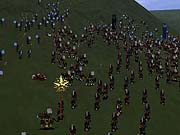
Of course it's also worth mentioning that Starcraft is filled with many interesting characters and has a great premise. Obviously, those who are still playing the game every day on Battle.net have long since finished the single-player campaign. Yet it's this single-player campaign that must have pulled a vast majority of these players into the game in the first place. In addition to the great gameplay, it's this context--all the memorable unit designs, good voice acting, and original ideas--that makes Starcraft have such a long-lasting appeal.
None of this is meant to suggest that all real-time strategy games should be like Starcraft. However, Starcraft is a great model for how real-time strategy developers might approach their projects: The game has a great concept that's founded on tried-and-true play mechanics (those of its predecessor, Warcraft II). It has an original back story, which again is inspired by a lot of popular science-fiction themes. It has three completely different playable sides, which were fine-tuned during the course of an extensive testing phase. It has longevity, because of its depth of play and also because of the ease with which you can find other opponents online. Even though another great real-time strategy game, Shogun: Total War, seems very different from Starcraft at a glance, it has a similarly uncompromising approach in how it tries to exceed in all the important details that make great strategy games so engaging and so much fun.
Next: Amer says less is more
Senior Editor
I believe ex-Eagles quarterback Randle Cunningham put it best during an interview on ESPN when he said, "Keep it simple, stupid." Of course, Randle was talking about football playbooks, but deep down inside, I think he was also referring to this week's question. I can see the appeal in games such as Starcraft and Age of Empires II, with their complicated tech trees and multiple factions, but when it comes to my real-time strategy games of choice, I like to keep it simple.
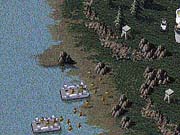
I've always liked the way Westwood has designed its real-time strategy games. Up until very recently, Westwood RTS games have followed a standard formula that included two factions, one resource, and a fairly accessible technology tree. I was never a fan of strategy games, so the fact that games such as Red Alert were so easy to jump into eased what would have otherwise been a rough transition into an unfamiliar genre. "Easy to learn but difficult to master." I'm sure you've heard that phrase describe hundreds of games before, but I found it to be true with my first experiences with Command & Conquer. By the time my friend let me borrow his GDI disc, he had already been playing the game nonstop for a week, yet after a handful of sessions, I started to get some victories. Compare this to Starcraft: I was also a few weeks late getting into that game, and when I finally went out to buy it, I would be soundly beaten every single time I played the game online. I was never able to "get" Starcraft. There were (relatively) too many resources to process; the technology tree was far too complicated; and I didn't understand how the strengths and weaknesses of the three sides played off against each other. To me, the game wasn't intuitive. Of course, millions of Starcraft fans worldwide prove me dead wrong.
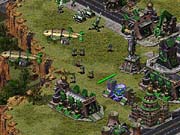
The interface also plays an important role in a good strategy game. Dune II and Command & Conquer had a very intuitive interface that was so easy to use that most people could look at it and figure out its functionality without ever cracking open the instruction booklet. I like that classic menu system, and I like how it has subtly evolved through the years. At its core, this layout--with the radar or map above a series of vertical build menus--has remained largely unchanged for the better part of the decade, and companies that have tried to reinvent the wheel haven't met with very much success. In fact, one of our guest writers, Ed Del Castillo, talks about this very dilemma in one of his
Ultimately, the deciding factor in what makes a good strategy game is your own personal preference. Of course, if a game sells 1 million copies in Korea, then your personal preference doesn't matter.
Next: Sam takes his games seriously
Hardware Editor
Let me admit straight off that I'm like a relapsed addict when I find a good strategy game. For days at a time, nothing else matters as I delve into the world of a new game and tinker with its units, technology tree, and economic model to find out how everything works. Then I just wake up suddenly and ask myself if it's really all that good. Sometimes it is, and I'll stick with it for weeks or months. But there's nothing more frustrating than investing dozens of hours building an empire only to have victory come too easily or be blindsided by a move that just doesn't make sense. The games I enjoy most aren't always the most popular, but they typically have a few things in common: an immersive setting, tight player controls, and a good balance to the game's central challenge, whether it's combat or management.
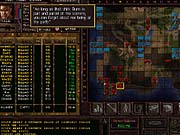
It's tough to emphasize how important setting is to a strategy game. Story isn't a hallmark of the genre, since strategy games tend to be nonlinear, and it's really tough for designers to develop several interesting characters and convincingly risk them in the line of fire, but Imperialism II shows how paltry mineral deposits could spark a colonial conflict. The forces at play just make sense.
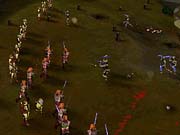
What separates strategy games from epic movies or the history books is that you're in charge. It's your tactical decisions or style of management that will win the day. I want to have enough options and low-level control to feel like I'm actually making things happen. But it's great when designers can help out by distilling options down to what makes for the most dramatic outcome. The criticism most often leveled at real-time strategy games is that they're just about building like crazy and throwing waves of units at the enemy. The unit AI always fights poorly, and there are just too many units for you to micromanage. Recent tactical games try to put players back in control of combat, and Bungie's Myth games did a terrific job of providing tools for intelligently managing formations of dozens of troops in real time. Myth multiplayer team games even gave a team captain the ability to delegate or retake control of units at will. There should be no reason to have to stand idle while your troops are being slaughtered.
Balance is one of the most talked about strategy game elements, and it's probably the most elusive. There can't be just one strategy that lets you overrun your opponents every time, or the game would be too easy. Yet, things shouldn't be stacked too heavily against the player, the game should be paced well, and the AI shouldn't cheat too obviously. Ultimately, it's good balance that'll keep most people playing a game--just look at Starcraft. But while Starcraft is a great game, its imitations pale in comparison. None of these three key elements can make a fun game alone. It's too bad so few games manage to get everything right, but I have my old standbys to play while I'm waiting.
Next: Readers remember single-player experiences
Reader Letters
What's Your Most Memorable Single-Player Experience?

Day of the Tentacle was indeed a very funny, original, and memorable game. However, the same company, LucasArts, made a far funnier, more original, and memorable game a few years before it. Does anyone remember The Secret of Monkey Island? It was awesome. Great music, engaging story, unforgettable characters, tough puzzles, and fantastic jokes. Its sequel, LeChuck's Revenge, was also great, as were two other games by the same company, Indiana Jones and the Last Crusade (I loved that there were multiple ways to do almost everything and that the game rewarded you for discovering all the different alternatives) and Loom (talk about original!).
Sierra also had a slew of memorable single-player adventure games. I would put Gabriel Knight as the first item on the list. Great story, good graphics, very immersive (I remember feeling real fear playing that game). I would add to that list: Space Quest 3 (great humor, story, and graphics for its time), Hero's Quest (also known as Quest for Glory), Quest for Glory II, and Leisure Suit Larry 1 and 3. Sierra/Dynamix also created one of the most memorable RPGs of all time: Betrayal at Krondor (great graphics, excellent story, long game, lots of room for exploration).
But the most memorable game of all is one you might not even have heard of. It's called Countdown and I believe it was made by Activision. It had a fantastic story that unfolded in a remarkable way; it was like a film that keeps you hooked from beginning to end. Its graphics were very good for its day, and it could reproduce digital sound with a PC speaker. That's right: The Sound Blaster and AdLib sound cards had just come out, but you didn't even need them to listen to the speech in this game. Countdown must have been one of the first games to use live action, and it did it very well. Countdown is still worth playing today, so if you can get yourself a copy, I recommend that you play it.
--'Alim Beveridge
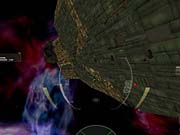
My most memorable single-player experience has to be from FreeSpace2. One event in particular that sticks in my mind is the beginning of one of the covert missions in which you and a few other wingmen fly captured alien craft into hostile territory on a reconnaissance mission. Just as I casually sit down to play out the mission, the mission loads, and immediately the wing leader is blaring over the com, screaming out orders, "Hit your burners, men! Dive, dive, dive!" I look up from my gamepad to see one angry Shivan Juggernaut staring straight down my shaft. I search frantically for the afterburners on my gamepad and thrust my nose down just in time to watch the mammoth beast jump into warp nearly 1 meter away from my ship. It was one of the few times I have ever "felt the moment" in any game. Of course, the sheer size of the Shivan Juggernaut, as well as the many other gargantuan capital ships in the game that make a Star Destroyer look like a Micro Machine, helped build up the tense atmosphere as well.
--Dave Le
Next: More reader letters
Reader Letters
What's Your Most Memorable Single-Player Experience?
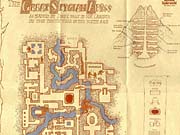
The game that sticks out the most in my mind is Ultima Underworld. I first heard about it in Dragon Magazine in which the reviewer gave it six stars out of five--I had to have it. I ran out and purchased it only to realize that there was no way it was going to run on my 8088, so the next day I went out and purchased a rather impressive 386 40MHz with 4MB of RAM. I played the game for weeks, and I was amazed--the world scrolled in real time, not jumping around in 90-degree turns like it did in games like Eye of the Beholder. I could look up and down, run, fight, open doors, throw things, swim, and talk to creatures--it was the most spectacular thing I'd ever seen on a computer. There was even a cohesive story.
I remember telling a friend that Underworld was a "quantum leap in gaming" and that he might as well throw away all his other games--this with "the" game. Ultima Underworld eventually took time from my pen-and-paper role-playing, which was bad for our group because I was the dungeon master. I was about halfway through the game, and I had made reams upon reams of notes and cross-references; I didn't want to miss anything. Then I received a sound card for my birthday, I installed it, and after about a day of configuring my system, I "heard" my first game ever. I couldn't believe it--the game had gotten even better! All of a sudden I could hear the doors, the water, the creatures, and there was mood and battle music. Of course, I had to start from the beginning again! I've owned about eight computers since then, and on each one I eventually pull out Underworld and install it, for nostalgic reasons, to hear a bit of the music and see how much games have advanced technically since then. There are games out today that surpass Ultima Underworld in every area--sound, graphics, and story--but it will take something truly startling to have an impact like Ultima Underworld did on me.
--Rob Walls
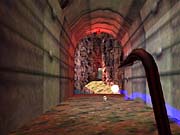
Half-Life. The elevator. Crabs. That was the first time I've ever spoken out loud in fright from a game. Sure, those little devils hide in dark vent shafts, but I expected them there. But on a huge, well-lit elevator? I didn't think they could surprise me there. Lil' old me, looking down at the landing area below, waiting to get to that medic station, when the sound of a crab jumping goes off, followed by the thwack of it hitting me. I turn around only to see three more sliding down the wall. I backed up over the edge and fell to my death. I'll never forget the damned crabs.
--Daedalus Kid
Next: Classic single-player
Reader Letters
What's Your Most Memorable Single-Player Experience?
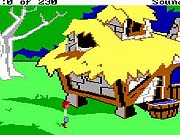
My most memorable experiences involve a trio of games by Sierra On-Line: The Black Cauldron, King's Quest III: To Heir Is Human, and Space Quest I.
I had (actually, still have) an Apple IIc with an expensive, high-quality monitor connected with a Video-7 interface. I was frequently disappointed that games for the Apple II didn't support the 16-color capabilities of 128K machines, especially the correct programming required for the Video-7 interface. When not done properly, 16-color games appeared in hi-res black and white. I was actually not much of a game fan at this point in my life.
Then I read about The Black Cauldron in an Apple II magazine. It sounded intriguing, and since I was a teacher, I thought it might be suitable for the classroom. I saw the screenshots in a review and on the box, but before booting up the game, I really had assumed that the character would be motionless on the screen, despite what the review claimed. I was flabbergasted when the characters all moved on the screen in sixteen glorious colors. This was a game that drew the image on the screen while you were watching, so for it to come to life was magical. I enjoyed it, but it proved to be impractical for the classroom because of the length of time needed to complete it.
I was so taken with the technology that I went out and bought King's Quest III. As far as Sierra's game engine of the day went, this was well advanced over that of The Black Cauldron. The game screens were each a work of art, with better animation than Cauldron's. This was also a difficult game. The evil sorcerer killed me umpteen times before I resorted to the hint book to figure out how to get past him. Once I got the hang of using the spell recipes in the manual, I didn't need to depend on the hint book as much. This was the first game I played where I got the tremendous satisfaction of overcoming extremely difficult puzzles to advance, and finally finish the game, which is the drug that keeps us all involved in this pastime.
Initially, I had only seen these games on the Apple IIe at school, with a regular color monitor. But I couldn't well spend the time needed for King's Quest III at school, so I took it home with misgivings, expecting it to show up on my overpriced monitor in black and white. The second the title screen appeared in 16 crisp colors, I experienced a feeling that I haven't really had since. It was a mixture of relief, surprise, and joy that Sierra had taken the trouble to properly program this game for my system.
The third game which I bought was Space Quest I. This was the first game I had played that was laugh-out-loud funny, long before LucasArts earned its reputation as the king of comic adventure games. Space Quest I constantly tickled me with its humor. Many critics have disparaged this game in particular for the fact that it killed you off so often, but that was point. When Roger died it was usually funny, and often spectacularly so.
--Clyde Dodge
Question of the Week Archive »
Got a news tip or want to contact us directly? Email news@gamespot.com
Join the conversation